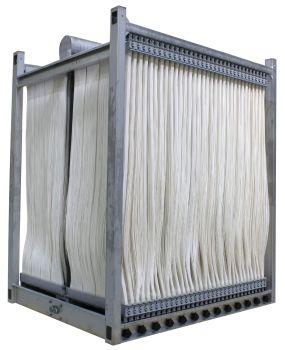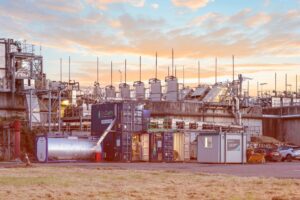GE Signs 15-Year Service Contract for Water Treatment and Monitoring at One of Russia’s Largest Petrochemical Plants
GE and Bashneft, a Rosneft-affiliated company announced the signing of a long-term service agreement to ensure reliable wastewater treatment at Rosneft’s industrial facilities in the Russian city of Ufa.

GE
Under the 15-year contract, GE will provide a comprehensive service solution featuring advanced digital technologies to monitor filtration equipment at the plant.
With this agreement, signed at the St. Petersburg International Economic Forum, GE Water & Process Technologies will take over maintenance responsibilities for ZeeWeed* membrane bioreactors (MBR), electrodialysis reversal and reverse osmosis equipment at the facility, extending equipment guarantees for the full life of the contract. The service solution will leverage GE’s state-of-the-art InSight remote water monitoring system, which combines big data and analytics to maximize performance, minimize unplanned downtime, lower operating costs and deliver better business outcomes.
GE earlier signed a contract for the supply of equipment as part of the renovation of the company’s water treatment facilities. Following completion of the project, the new system will output up to 84,000 tons of clean water per day—an unprecedented figure for a Russian industrial facility. The GE membrane bioreactor significantly improves treatment efficiency by passing water through microscopic pores, cleansing it of nearly all impurities and microorganisms.
“We are very happy to be cooperating with Bashneft. This high-tech solution will help Bashneft meet their wastewater and water reuse needs as well as ensure their operations meet stringent environmental standards,” said Heiner Markhoff, president and CEO, GE Water & Process Technologies. “Now, by utilizing our membrane experts and process analysts to service, monitor and maintain the MBR and water treatment equipment, Bashneft can focus on their core business.”
GE’s cutting-edge ZeeWeed 500 technology separates particles, bacteria and viruses from water or wastewater. Its unique ability to handle high peaks of solids and turbidity, combined with the highly efficient process and low energy and chemicals usage, makes it ideal for treating deteriorated or high-variation raw water sources while ensuring high-quality and stable potable water quality.
Source: General Electric Company







